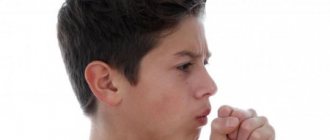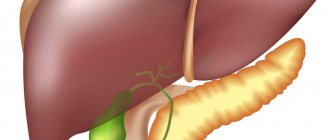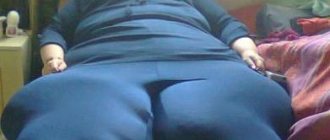A kidney cancer tumor is formed from the cells of this organ and is an uncontrollably dividing cell mass that has ceased to perform its functions. Most malignant neoplasms of this organ begin their growth in the renal tubules and are renal cell carcinoma.
In this article, we will introduce you to the main causes, types, signs and symptoms, prognosis, methods of diagnosis and treatment of kidney cancer. This information can help you suspect the development of this dangerous disease in time and take the necessary measures to combat it.
Every year, kidney cancer is diagnosed in approximately 40 thousand people and almost 12 thousand of them die from this dangerous disease. Among all cancers, it ranks 10th and accounts for about 2-3%. According to statistics, this disease is more often observed in city residents over 55-60 years of age and mainly in men (about 2 times more often than in women).
Sources of kidney tumors
The kidney is a unique creation of nature. In the human body, even before birth, there is a powerful cleansing station that rids the blood of a mass of harmful substances. Without this mechanism, organs and tissues would have long ago lost their ability to work due to chronic poisoning. There are two fundamentally different cleaning systems inside the kidney. The filter is the vascular glomeruli into which the heart muscle pumps blood every second. At this stage, a fairly rough cleaning occurs. Only blood cells and especially large proteins remain in the vessels.
The second stage is a more subtle cleaning. The whole process takes place in special tubes that originate from the vascular glomeruli - the renal tubules. Along their entire length they contain special guard areas. They react to the appearance of beneficial chemicals and return them back into the bloodstream. The result of these two stages is the final product - urine, containing only those substances that the body can no longer use.
Kidney tumors most often develop from glomeruli and tubules
Urine begins its journey outward in the pelvis. This structure also belongs to the kidney, but is significantly different in appearance. There are no glomeruli or tubules here. But there is a strong tissue - the epithelium, under which lie muscles that help move urine. The ureter originates from the pelvis, and in close proximity are the vessels that supply the kidney - an artery and a vein.
The formation of all this diversity requires at least nine months, which the child spends in the womb. All components of the kidney are formed from one precursor. However, the process of its transformation is often disrupted under the influence of external and internal reasons. These underdeveloped cells are not able to do their job, but they have not yet forgotten how to reproduce at high speed. They form the most common childhood tumor, Wilms tumor.
Wilms tumor is most common in children
Kidney tumors also have their own champions. For example, renal cell carcinoma, which arises from glomeruli and tubules, accounts for 3% of all types of human cancer. In children, Wilms' tumor has such rights. This type of cancer is not only the leader among kidney tumors, but also among the entire mass of cancer diseases.
Kidney cancer - video
Patterns of appearance and growth of kidney cancer
The formation of a malignant kidney tumor does not occur suddenly. The mechanism that promotes this process began to be realized in the mother’s womb long before the child was born. The formation of a whole organism from one cell is the positive side of the mechanism. The genes that a person received at the time of conception completely control the reproduction and growth of cells. They determine how many cells and what specific type should be formed.
DNA contains all the information about a person
However, this mechanism also has a negative side. All cells of the body must be constantly monitored. This is what the immune system does. New cells are formed throughout life. The older a person is, the more often his genes make errors and mistakes when forming new cells. However, these fruits of mistakes are not destined to live long. Immune cells, like very scrupulous watchmen, quickly kill them. This seemingly perfect mechanism itself begins to make mistakes over time. So in any part of the kidney a single cancer cell appears. From this moment the development of cancer begins.
The trouble with cancer is not that cells that are atypical in appearance begin to be present in the body. And not even the fact that they don't do their job. The problem is much deeper and broader. Cancer cells multiply without any control. They take virtually all nutrients from healthy cells, dooming them to a hungry existence. However, cancer cells are not limited to using blood from existing vessels. Under the influence of certain chemicals, newly formed vessels begin to grow into the tumor.
Cancer spreads through the blood and lymph
Another important goal of tumor cells is to conquer and in their own way use as many healthy areas of the body as possible. In this matter, blood and lymphatic vessels play a significant role. According to the first, cancer cells enter neighboring and distant organs, and according to the second, to the nearest lymph nodes. These messengers from the primary focus become the ancestors of the same tumor - metastasis. Only one malignant cell is enough for its formation. The location of the primary lesion determines which organs and lymph nodes the tumor will metastasize to. In the case of kidney cancer, these are primarily the lungs, brain, liver and bones. The latter can be part of the spine, pelvic skeleton, chest and limbs.
Kidney cancer often metastasizes to the bones
The question of why a tumor forms in some people and does not affect others is still far from being fully resolved. High blood pressure (hypertension) and being overweight add some degree of risk. In the same series, an important place is given to smoking and work in the chemical industry. Wilms tumor stands out somewhat. In this case, global genetic breakdown apparently played a decisive role. It caused not only the development of a kidney tumor, but also many other anatomical abnormalities in the internal structure of the body.
Tumor metastasis - video
Prevention
The exact causes of cancer have not been fully understood for a long time, and treatment is a complex and expensive process. Prevention of malignant pathology consists of following the principles of a healthy lifestyle, as well as being attentive to one’s own health:
To give up smoking
- Getting rid of bad habits. Reducing the risk of quitting smoking reduces the likelihood of developing cancer.
- Reducing the amount of carcinogens entering the body. Convenience foods, smoked meats, fried foods, fast food - harmful foods contain toxic additives, which are considered as one of the risk factors for developing kidney cancer.
- Reducing harmful external influences. You should avoid excessive tanning, eliminate as much as possible the influence of industrial hazards, and spend more time in the fresh air in environmentally friendly areas.
- Body weight control. One of the risk factors is obesity, and eliminating it reduces the likelihood of developing cancer.
- Scheduled medical examination. During annual preventive examinations, oncological pathology is often detected in the early stages, when the success of treatment is high and the prognosis is favorable.
- Timely treatment of concomitant diseases. The presence of kidney diseases, nephrosis, nephritis, increases the risk of the formation of pathological proliferation of cells with malignant properties.
Research into oncological pathology continues. Work is underway to develop specific vaccinations against cancer, and the trends in this area of science are very impressive. The emergence of new drugs gives hope to millions of patients. Probably, humanity will soon be able to get rid of cancer forever.
Symptoms of kidney cancer
Kidney cancer is reliably hidden from view in the very depths of the body. Its manifestations more often occur when the process has already gone far and has not existed for the first day. A malignant kidney tumor is often discovered purely by chance against a background of complete well-being. Kidney cancer stands out among all tumors in that it can manifest itself with only one sign of trouble. And even these minor symptoms may disappear soon after they occur. In children, general symptoms are more common than those indicating kidney damage.
Symptoms and signs of kidney cancer - table
| Symptom of kidney cancer | The cause of the tumor symptom |
| Release of harmful substances by tumor cells into the general bloodstream |
| Unmotivated weight loss | Nutrient supply to tumors and their deficiency in healthy organs and tissues |
| Periodic unmotivated fever | Disintegration of malignant cells |
| Red blood cell deficiency (anemia) |
| Hypertension | Narrowing of the walls of blood vessels under the influence of substances released by the tumor into the general bloodstream |
| Bloody urine when urinating normally | Formation of defects in large and small vessels of the kidney against the background of a growing tumor |
| Intense pain in the lower back, groin, inner thigh (colic) | The formation of blood clots inside the pelvis and an increase in urine pressure in it |
| Inability to urinate on your own | Formation of blood clots inside the urethra |
| Dull vague sensations in the lumbar region | Tumor growth inside the kidney |
| Unmotivated appearance of dilated testicular veins visible to the eye in men | Stagnation of blood in the veins of the testicle due to tumor growth |
Diagnostics
To confirm the diagnosis of kidney cancer, the following tests are performed:
- Ultrasound of the kidneys;
- a test to detect blood in the urine;
- radiography (including urography and selective renal angiography);
- CT;
- MRI;
- puncture biopsy for cytological examination (performed under ultrasound control);
- nephroscintigraphy.
A blood test reveals an increase in ESR and anemia, and in some cases an increase in the number of red blood cells indicates the presence of a tumor that produces erythropoietin.
To identify metastases, ultrasound of various organs, lung radiography, CT and bone scintigraphy can be performed.
Ways to fight kidney cancer
Of course, the tumor should be treated by a highly qualified specialist. Self-medication is unacceptable, since such tactics only contribute to the approach of an unfavorable outcome of the disease. In many cases, kidney cancer is treated in several ways. However, the choice always leans in favor of surgery. This circumstance applies to both renal cell carcinoma and Wilms tumor, as well as other types of malignant neoplasms.
Surgeries for kidney cancer
Modern medicine has developed several surgical technologies that are currently successfully used for kidney cancer. Both the volume of intervention and the method of approaching the tumor site differ. For kidney cancer, the surgeon removes the entire organ (nephrectomy) or only the affected part (resection). The choice depends on the location of the tumor and its size. An incision from the abdomen or lumbar region can be used as access. Currently, urologists are increasingly inclined to organ-preserving operations. In this case, the neighboring healthy organ will not have to take on the double burden of cleaning the blood from toxins.
Kidney resection involves removing part of the organ along with the tumor.
For a small tumor, the surgeon tries to perform kidney resection through several punctures. This technology is called laparoscopy. It requires a certain skill of the doctor and the availability of special equipment. A great help at the time of surgery is the ability to visually control all actions to remove the tumor. In this way, both the entire kidney and part of it are removed. If there are nearby metastases, the doctor also removes them.
Laparoscopy is a modern surgical technology
Radiation treatment
Of all types of malignant kidney tumors, pelvic cancer and Wilms tumor are the most sensitive to the effects of X-rays. Renal cell carcinoma of the glomeruli and tubules is a contraindication to the use of this method. Radiation allows you to influence not only the tumor itself, but also metastases.
Drug treatment
Specialists treat cancerous tumors by prescribing chemotherapy drugs. However, in the case of a kidney tumor, this tactic is used only for Wilms tumor:
- Methotrexate;
- Doxorubicin;
- Cisplatin;
- Azathioprine.
For other types, modern medications are successfully prescribed that affect the tumor vessels and cause starvation of its cells:
- Sunitinib;
- Bevacizumab;
- Tamsirolimus;
- Everolimus.
Afinitor is a modern drug for the treatment of kidney cancer
Stages
There are two main approaches to characterizing the degree of development of the disease.
The international TNM classification takes into account three factors:
- assessment of the primary lesion (T) – tumor size and its extent;
- condition of lymph nodes (N);
- presence of metastases (M).
Kidney cancer according to ICD-10 is classified as C64, malignant neoplasm of the renal pelvis - C65.
The second, the Robson classification, distinguishes 4 stages of kidney cancer:
- first, asymptomatic stage. The patient cannot yet notice obvious manifestations of poor health, and the size of the neoplasm is too small to be directly detected by palpation. If kidney cancer is accidentally discovered at this stage, the prognosis is favorable - 90% probability of recovery and return to normal life with adequate treatment;
- Stage 2 is accompanied by tumor growth, but is not characterized by distinct signs. Therefore, it is difficult to identify the disease without laboratory tests;
- Stage 3 kidney cancer occurs with tumor enlargement and spread of pathological processes to the adrenal glands, blood vessels and lymph nodes;
- Stage 4 kidney cancer is characterized by active growth of the tumor and the spread of metastases throughout the body, to different organs and systems. The dangerous impact of the disease on the life and health of the patient increases.
If you consult a doctor at the first symptoms, which can occur already in the second stage, you can increase your chances of recovery.
Consequences and prognosis
The ability to cure a kidney tumor largely depends on what type it is and how far it has spread within the body. In the first stages of renal cell cancer, success can be achieved in 90% of cases. Metastases and damage to kidney vessels greatly complicate the fight against cancer. Wilms tumor is different in that even with an advanced form of the disease, you can count on a favorable treatment prognosis in 80% of cases. However, this circumstance only applies to children. In adults, the fight against the tumor often has an unfavorable outcome. In severe cases, the following complications of cancer develop:
- bleeding from the kidney or inside the abdominal cavity;
- urinary retention;
- inability of the kidneys to clear waste from the blood (renal failure);
- death.












